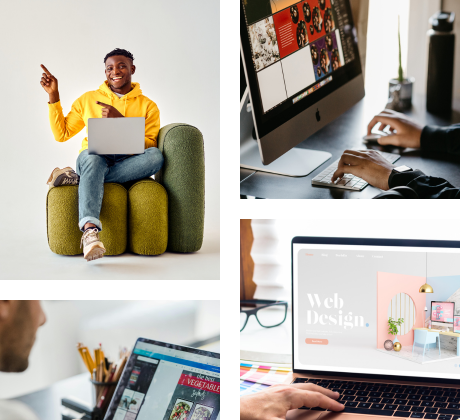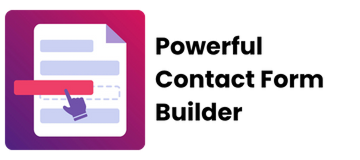Best Design Apps For Shopify Stores in 2025
Find the best design apps for Shopify stores that need to add, update and change sections, their theme, images and more with easy to use design apps.
Updated on 10/19/2025

earth & blossoms
"We have been using OT section - Trust badges across our website and really easy to set this up and very pleases with this section. I plan to use more sections and being free gives small business options to add more features to the website with out additional cost and really appreciate this. thanks"
Latest Customer Reviews
B Dazzled By Norsiah Borhan
"Love the fact that you can design your own website on your own without breaking the bank. So many sections to choose from! Major love that the help support was quite fast in resolving a problem I have with one of the section. It was taken care within minutes.. I definitely highly recommend this app to anyone."
Latest Customer Reviews
Medusa's Makeup
"I love this app! I am a graphic designer and I like to create my own badges and labels. This app is really great for that. The customizations the app has built in are really good too. Tina is very helpful pointing me in the right direction on getting my custom label uploaded."
Latest Customer Reviews
Kingspan store België
"We use Powerful Form Builder to run multiple registration forms for different campaigns. It's been reliable overall: multilingual forms work well, new customers are created automatically, and confirmation emails go out as expected. When we did run into a couple of issues, support was quick and thorough, special thanks to Emma, who was amazing and made sure the problem is solved."
Latest Customer Reviews
PictureThisPasadena
"This makes social media, marketing, templates and listings so much easier. This is probably the most useful Shopify application for my business. If you use Canva, this will make things even easier. The search functionality is great."
Latest Customer Reviews
How to Effective Design New Sections, Pages and Assets For Your Shopify Website
Creating a visually stunning and high-performing Shopify store often requires stepping outside of the standard theme editor. While Shopify provides excellent tools to get started, achieving a truly unique and optimized design demands a more professional workflow. The key is to separate the design phase from the development phase.
The Professional Method: Design in Figma, Build in Shopify
The industry standard for modern, high-fidelity web design is to use a tool like Figma before a single line of code is written. This process allows for complete creative freedom and strategic planning without the technical constraints of a theme editor.
First, you or your designer will create a pixel-perfect mockup of your new pages, sections, or entire website in Figma. This is where you finalize layouts, typography, color schemes, and user flow. Once the design is approved, it is then handed off to a developer.
The developer's role is to translate that static design into a fully functional, custom-coded Shopify section or page. This approach has several significant advantages:
- Total Customization: You are not limited by your theme's pre-built options. This is the best method to get the exact look and functionality you want, creating unique sections and pages that make your store stand out.
- Code Efficiency: Custom-coded sections are built from the ground up. This results in clean, lean code that is optimized for performance, leading to faster page load times, a critical factor for SEO and user experience.
- Uniqueness: Move beyond the generic templates that countless other stores use. A custom design ensures your brand has a distinct and memorable online presence.
The Alternative: Using Section Libraries and Theme Builders
If a full custom design process isn't feasible, another effective way to enhance your store is by using third-party section libraries or advanced page builder apps. These apps integrate with your existing theme and provide a wide variety of pre-designed, configurable sections that you can add to your pages. This is a great middle-ground for adding new layouts and features without needing to hire a developer.
The Do's & Don'ts of Shopify Design
Whether you're customizing a theme or building from scratch, following best practices is essential for creating a successful storefront.
Design Do's:
- Do Start with a Strong Brand Guide: Before you design anything, establish your brand's colors, typography, and logo usage. Consistency builds trust and recognition.
- Do Prioritize Mobile-First Design: The majority of your customers will visit on a mobile device. Design for the smallest screen first to ensure the core experience is seamless, then scale up for tablet and desktop.
- Do Optimize Your Images: Large images are the number one cause of slow websites. Use tools to compress your images without sacrificing quality to ensure your pages load quickly.
- Do Focus on a Clear Visual Hierarchy: Guide your customer's eye. Your most important elements, like the "Add to Cart" button, should be the most prominent. Use size, color, and placement to create a clear path to purchase.
- Do Use High-Quality Visuals: Invest in professional product photography and graphics. Clear, appealing images are crucial for selling products online and making your brand look credible.
Design Don'ts:
- Don't Overload with Apps and Pop-ups: While apps add functionality, too many can drastically slow down your site. Similarly, use pop-ups sparingly, an immediate, intrusive pop-up can cause visitors to leave.
- Don't Use Too Many Fonts and Colors: Stick to your brand guide. A chaotic mix of fonts and colors looks unprofessional and can make your site difficult to read. A good rule is no more than 2-3 fonts and a core palette of 3-5 colors.
- Don't Hide Important Information: Your contact information, shipping policies, and return policy should be incredibly easy to find. Hiding this information erodes customer trust.
- Don't Neglect White Space: Don't cram every inch of the page with content. White space (or negative space) helps reduce clutter, improves readability, and gives your design a more premium, organized feel.
- Don't Make Your Navigation Complicated: Your main menu should be simple and intuitive. If customers can't find what they're looking for within seconds, they are likely to go elsewhere.
Unlocking the Power of Shopify's Drag-and-Drop Theme Editor
At the heart of customizing your Shopify store is the Theme Editor, a powerful and intuitive drag-and-drop interface. Think of it as a set of digital building blocks. Every Shopify theme comes with a default library of sections, like "Image with Text," "Featured Collection," and "Slideshow" that you can add, remove, and reorder on your pages to build your desired layout without touching a single line of code.
Getting the Most Out of the Editor
To maximize this tool, start by thoroughly exploring the sections and settings your theme already provides. You can often achieve a great deal of customization simply by adjusting colors, changing layout options (e.g., image alignment, text size), and combining the default sections in creative ways. However, you will eventually find the creative limits of your theme's default block library. When you want more variety and more powerful features without hiring a developer, the next step is to expand your toolkit with apps.
Supercharging Your Sections with Apps
Several apps on the Shopify App Store are designed specifically to augment your theme editor, injecting a much larger library of pre-built, highly customizable sections directly into the drag-and-drop interface. When you install one of these apps, you'll see its new sections appear in your list alongside your theme's default ones.
These apps are a fantastic way to:
- Access More Designs: Get dozens of new sections like advanced accordions, countdown timers, testimonials carousels, and complex grids that your theme doesn't include.
- Increase Functionality: Add features like before-and-after image sliders, pricing tables, and interactive tabs.
- Bridge the Gap: They provide a cost-effective way to achieve a more custom look and feel without the investment required for a fully custom-coded solution.
When to Build Custom Sections and Solutions
While the theme editor and section apps offer incredible flexibility, there are specific scenarios where a custom-built solution is necessary. You'll know it's time to hire a developer when you encounter these needs:
- Unique, Brand-Specific Designs: If your brand requires a pixel-perfect, completely unique layout that cannot be replicated with pre-built blocks, you need a custom section. This ensures your site is a true reflection of your brand's vision and doesn't look like any other store.
- Specialized Functionality: When you need a feature that is more than just a visual layout, custom development is the answer. Examples include: A product customizer (e.g., engraving text, choosing custom colors). An interactive quiz that recommends products. A dynamic calculator for pricing or measurements.
- Peak Performance and Site Speed: While section library apps are powerful, they can sometimes add extra code to your site (often called "code bloat") to support their wide range of options. A custom-built section is coded with only the exact features you need, making it incredibly lightweight, clean, and fast-loading. For performance-critical pages, custom is always best.
- Complex Data Integration: If you need a section to pull in and display data from a third-party API or from complex Shopify metafields in a very specific way, a developer can build this logic directly into a custom section for a seamless and reliable integration.
Why Custom Design Matters: You're 1 Among Millions
In today's crowded ecommerce landscape, standing out isn't just nice to have—it's essential for survival.
The Reality: Generic Won't Cut It
With millions of stores using similar themes and templates, customers see the same layouts, same sections, and same user experiences everywhere they go. When your store looks like everyone else's, you become forgettable.
The Solution: Custom Design That Converts
Custom design isn't just about aesthetics—it's about creating a unique experience that:
- Builds Brand Recognition: Distinctive design makes your store memorable
- Increases Trust: Professional, custom design signals credibility
- Boosts Conversions: Optimized layouts guide customers to purchase
- Reduces Bounce Rate: Engaging design keeps visitors on your site
- Improves SEO: Fast, well-structured custom code ranks better
Don't Get Lost in the Crowd
Use the design apps above to create a store that stands out, converts better, and builds a memorable brand experience that your competitors can't match.





